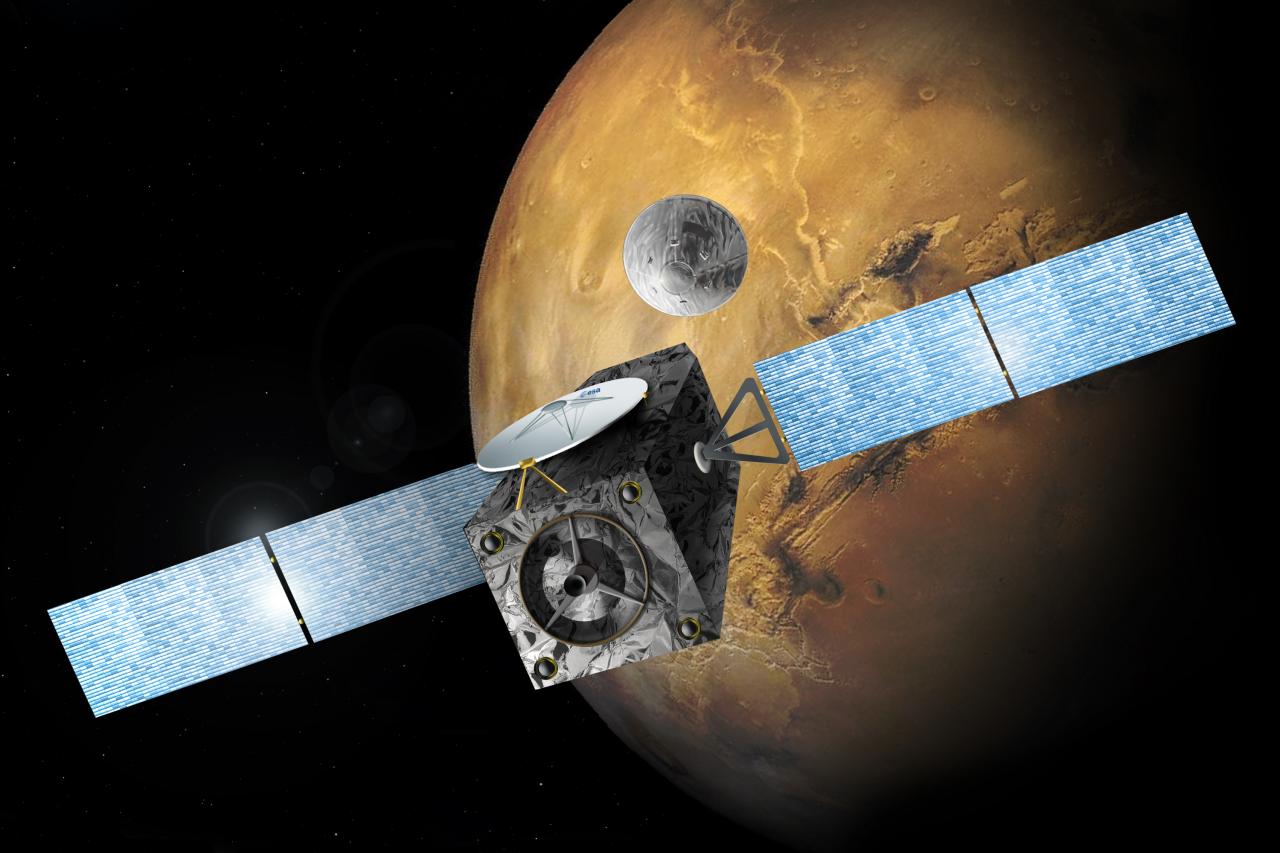IAA codirects NOMAD, an instrument that may solve the enigma of methane on Mars
In eight months’ time, an instrument called NOMAD will fly to Mars aboard the ExoMars mission of the European Spatial Agency (ESA)
In January 2016 the European Spatial Agency will launch ExoMars, a mission intended to study the atmosphere and underground of Mars, and specifically to search for gases of possible biologic significance. The Institute of Astrophysics of Andalusia (IAA-CSIC) designed part of the NOMAD instrument, a key component of the ExoMars orbital spaceship specifically designed to study methane – a gas mainly produced by living creatures on Earth whose discovery on Mars in 2004 came as a real surprise.
"The 2004 data were not conclusive, because they displayed a startling variability”, says José Juan Lopez Moreno, IAA researcher in charge of the Spanish participation in NOMAD. "Methane takes centuries to decompose, so its presence should be constant in time. In stead of that, what we observed was the disappearance of the methane found by the Mars Express mission in a matter of months, and we do not understand the processes that could lead to the depletion of methane so quickly".
A different mission, dubbed Curiosity, finally confirmed – after more than a year of unsuccessful research - the existence of traces of methane on Mars. "Until then, all we had were local measurements made by instruments not specifically designed to study methane, and the problem was somewhat abandoned for lack of plausible explanations. The detection of methane and its variability challenges us once more to search for satisfactory explanations which we do not yet have”, says Miguel Angel Lopez Valverde, IAA researcher participating in the NOMAD project. "Whence the importance of NOMAD, which holds the key to finally solving the enigmas concerning methane on Mars".

ExoMars mission (ESA).
NOMAD is a high resolution spectrograph with a very high capacity for measuring rare components – up to one hundred times greater than the devices used so far – using the technique of solar occultation: observing how the Sun is concealed behind the planet’s limbo (i.e., continuously observing sunsets and sunrises from the instrument’s orbit), it will be able to infer the atmosphere’s components.
Marte y el misterio del metano from IAA-CSIC on Vimeo.
"NOMAD will not only generate the first global and precise map of methane on the atmosphere of Mars. It will also monitor it, observing the pattern of its distribution over atmosphere in order to find the source of production or depletion”, says Lopez Moreno (IAA-CSIC). Among the sources of methane contemplated by researchers are geologic processes. NOMAD will also be able to determine the isotopic composition of methane in order to determine whether its origin is geological or biological.
NOMAD was created by an international team of researchers and engineers and received substantial help from the Institute of Astrophysics of Andalusia (IAA-CSIC), which was in charge of designing and producing the electronic ware of the instrument as well as the central computer, the energy supply and the software.
Instituto de Astrofísica de Andalucía (IAA-CSIC)
Unidad de Divulgación y Comunicación
Silbia López de Lacalle - sll[arroba]iaa.es - 958230532
http://www.iaa.es
http://divulgacion.iaa.es

